Diana Gilman-Ford doesn’t like to fly. She hasn’t been on a plane since the late nineteen-nineties, and even then, she didn’t make it off the ground. While the plane was still on the tarmac, she suffered a panic attack and had to disembark. Still, for most of her life, Gilman-Ford looked up at planes in the sky with awe. What a marvel, she used to think. Men in the sky.
Then, in August 2022, Tweed New Haven Airport, located just fifty yards down the street from Gilman-Ford’s house, entered into a forty-three-year contract with the airport management company Avports LLC. The deal paved the way for a one-hundred-million-dollar investment in the expansion of the airport. A year earlier, in May 2021, the Airport Authority had announced a new partnership with Avelo Airlines, an ultra-low-cost carrier that began offering flights out of New Haven in November 2021.
Now, over twenty Boeing 737 jets take off and land each day on the Tweed runway, situated three miles from downtown New Haven. Sometimes the jets move as late as 10:30 p.m. Gilman-Ford calls her house, which she has lived in for twelve years, a newfound “nightmare.” She keeps her windows closed to block the smell of jet fuel. She stopped hanging the clothesline and pruning the garden last year. And then there’s the noise. “I don’t even have words for the noise,” Gilman-Ford said. “There are times it’s so bad you cannot even function.”
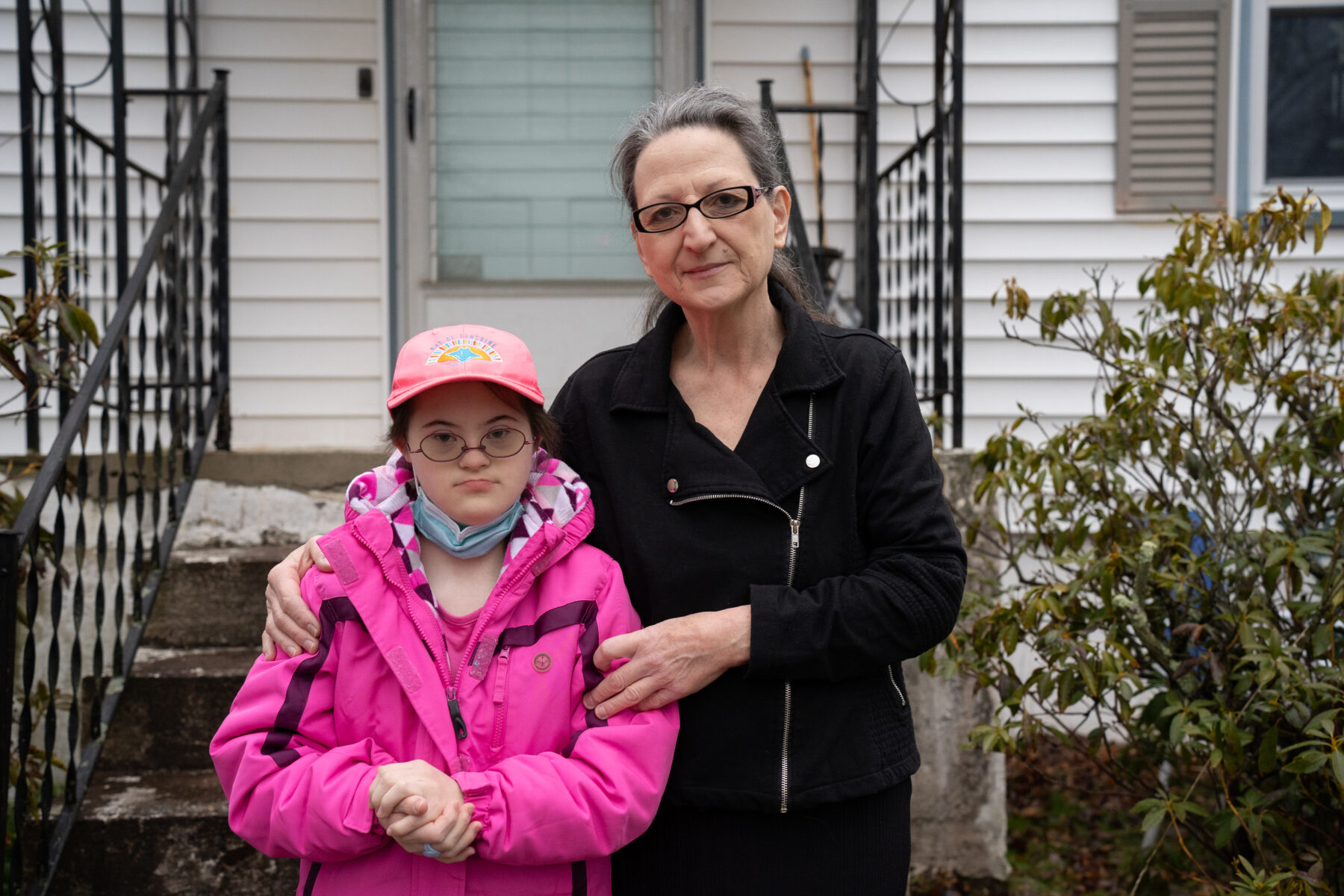
“I have great empathy for people who live near the airport,” said Matthew Hoey, the First Selectman of Guilford and Chair of the Tweed Airport Authority Board. Still, he has supported the airport expansion from the beginning. He worked with Avports and Avelo in the initial stages to secure their investments. From his perspective, the expansion of Tweed is for the common good. “The success of the airport has spillover for the region, and for the immediate vicinity,” Hoey said. And besides, “No one who bought a house didn’t know the airport was there.”
Opponents and proponents of the Tweed Airport expansion seem to operate in entirely different registers. Critics of the airport, largely residing within a few miles of Tweed, denounce the noise and air pollution, as well as increased traffic and safety concerns. Gretl Gallicchio, who lives in New Haven near the airport, said that she had to “completely reevaluate what it means to have a future” in her once quiet neighborhood. “It’s depressing,” she said, “to watch the place where we’ve lived be destroyed.”
Residents of these low-lying, shoreline neighborhoods already contend with warming and flooding, local consequences of the global climate crisis. They are skeptical of the value of Tweed’s future LEED-certified, energy-efficient terminal—especially when the aviation industry plays a massive role in carbon emissions. Such environmental concerns would be compounded by jumbo jets, the traffic, and the increased strain on emergency services that will come with the expansion.
Proponents of the airport are quick to recognize these concerns but dismiss them with utilitarian logic—more people will benefit from Tweed than will be hurt, and thus the expansion will be justified. The benefit takes many forms: economic growth from jobs in aviation and construction, accessible and affordable travel from Avelo’s budget flights, and a potential decrease in energy use after construction of the new, LEED-certified terminal.
The one thing everyone can agree upon is how enormous and successful the expansion of Tweed services has been already, and how impactful future changes will likely continue to be. Since the first Avelo flight took off from New Haven on November 3, 2021, and landed in Orlando about two hours later, Avports has seen an eleven-fold increase in air traffic at Tweed. In 2020, there were thirty-eight thousand enplanements at Tweed. In 2023, there were 465,538. According to Tom Rafter, Executive Director of the Tweed New Haven Airport Authority, Tweed is the second fastest-growing airport in the United States. This may only be the start. Under Avports’ master plan for its lease from the Airport Authority, effective until 2065, the company will invest one hundred million dollars into Tweed and oversee the construction of a new terminal and extension of the runway.
To Hoey, New Haven Mayor Justin Elicker, and most other politicians with a stake in the fight, the equation is simple. Tweed brings jobs and revenue to the region. Private investment from Goldman Sachs-owned Avports pays for the venture. Government departments oversee permits and regulations to ensure that construction is up to federal standards. The world carries on, the same as it always has, now with six additional flights from New Haven to Florida every day. But for residents like Gilman-Ford, it’s a world changed. The noise that disrupts her sleep, the vegetable garden and clotheslines she feels she’s lost access to, and the black soot she says covers the outside of her house are enough signs of the impact. “I don’t care what that study says,” she said, speaking about federal environmental impact reports. “Because we know, we’re living here.”
From Puddle Jumpers to Regional Hub
For all its rapid growth, Tweed is tiny, sitting low down in a large bowl just twelve feet above sea level. To get there, drivers exit I-95, the main throughway to town, and roll down a two-lane road with yellow lines down the middle and parking lanes on either side. Only small green signs with a white airplane icon and an arrow indicate that Tweed is nearby. Single-family homes spaced about fifteen feet apart with grassy lawns line the block. Speed bumps and yard signs increase in number closer to the airport: “Keep Tweed Small,” they read. On the tarmac, across the street and behind the terminal, there’s usually at least one purple, white, and yellow Avelo 737 jet. Morris Creek flows underneath the air traffic control tower, underneath the terminal, and down the tarmac on the other side.
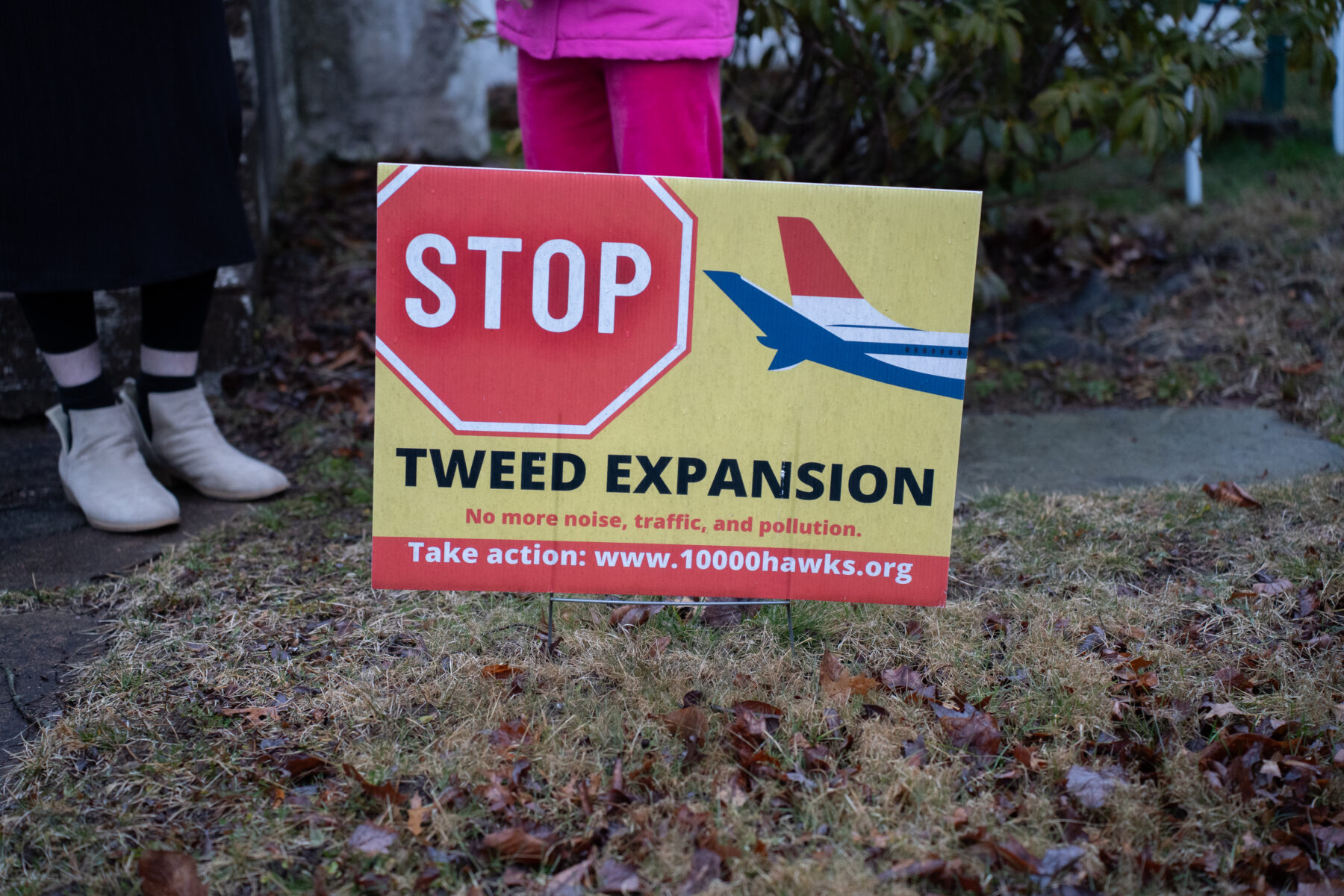
Tweed Airport is not a new addition to this tree-lined New Haven neighborhood. Opened in 1931 as the New Haven Municipal Airport, it took the name Tweed in 1961 from its first manager, John H. Tweed. Having purchased the land from East Haven in 1931, the city of New Haven fully owns the acres that Tweed sits on and leases it to the Tweed Airport Authority. The complex also crosses into neighboring East Haven, although East Haven does not share any financial ownership. Throughout the twentieth century, flight offerings shifted as different airlines attempted to run routes through New Haven. Due to the short length of the runway and small terminal, planes were small and flight schedules inconsistent. More often than not, passengers chose to fly from New York, Hartford, or Westchester instead.
Before 2021, there were not constant 737s at Tweed as there are today, which seat up to 120 passengers; instead, just narrow-bodied airliners seating about seventy-five people maximum. This was due to a 2015 legal battle, where the Connecticut government prevented the Airport Authority from expanding the length of the runway. The move would have allowed for larger planes and additional carriers to service Tweed. Then, in July 2019, the Second Circuit Court of Appeals reversed that decision.
Rafter, the Executive Director of the Airport Authority, keeps a small orange booklet with the details of the Supreme Court ruling on his desk at his Tweed office. It reminds him of past resistance to the airport and the avenues through which expansion was still able to move forward.
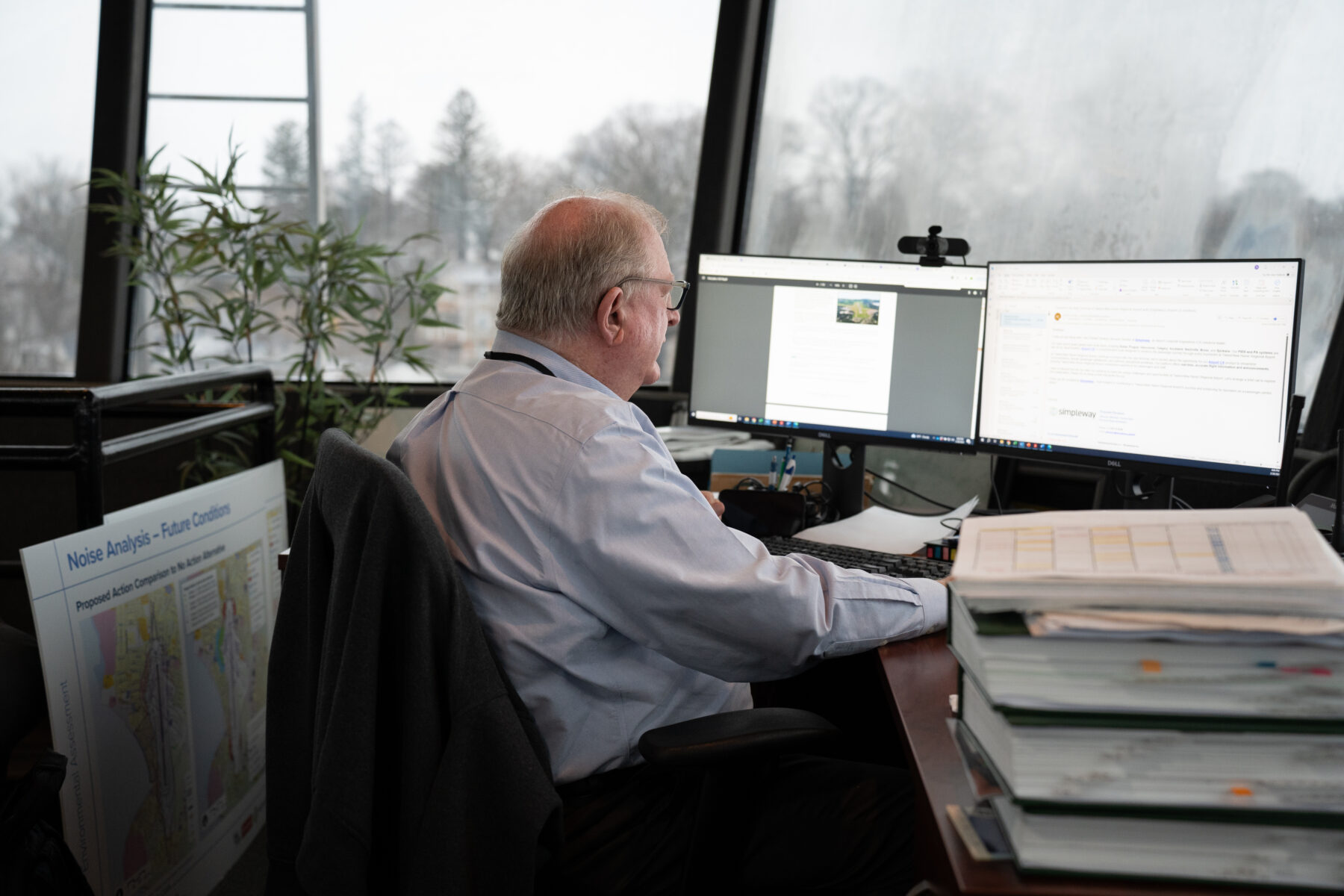
Rafter, like Hoey, who sits on the board, seems unfazed by local opposition to Tweed expansion. A veteran of the aviation industry, he’s been in similar situations before. “I’ve lived at the end of runways, I’ve lived near airports,” Rafter said. “I understand their concerns.” He says opponents, though vocal, are not the only ones with an opinion about Tweed. The people who use the airport, who fly the Avelo flights, park in the nearby parking lot, and work jobs in the terminal, he argues, are showing their support for the airport and its expansion through their actions. Tweed also has its vocal cheerleaders: numerous residents of New Haven, East Haven, and surrounding towns who post updates on new Avelo routes, videos taking off over the Sound, and updates on weather delays.
Yale students and affiliates alike also frequently fly through Tweed. Camila Young ’26 has taken over twelve Avelo flights since beginning college between New Haven and her home in Miami. “I really like Tweed,” she said. For Young, the small airport is convenient and she finds the people there friendly. “It seems kind of like the mom-and-pop version of the airport.”
Most days, Rafter has the tower to himself. From up here, he can see the entire expanse of Tweed: the houses on Burr Street which sit right across from the airport gates; the cars loading and unloading in front of the terminal; the brook that runs from the parking lot to the tower; and the planes as they land, taxi, disembark passengers, and take off again. Above it all is the expansive sky, visible for 360 degrees from the wrap-around windows in Rafter’s tower.
From up here, Tweed looks beautiful. The tarmac is lower than the surrounding houses, with orange and red foliage on all sides. To the East Haven side of the airport, where the new terminal will be built, Rafter points out a few commercial buildings and the woods he says separates the airport from residential areas. “The longest highway in the world is a runway,” he says. “There are airports around the entire country and they are part of a larger system.”
The Environmental Concerns
Gilman-Ford stands in the parking lot of Robinson Aviation on the east side of the terminal, watching the planes. Next to her, the surface of her car, a 2010 Mercury Sable, is covered in a thin layer of brown grime which she says is from airplane combustion. A yellow “Stop Tweed Expansion” sticker is peeling off at the edges. A plane took off three minutes ago, and it takes that long for the jet fumes to make their way over on the wind.
Both Gilman-Ford and her daughter have asthma. She said her daughter’s asthma attacks have become more frequent since Avelo arrived. In East Haven, more than 21 percent of children have asthma compared to just 14 percent in New Haven and just 13 percent throughout the rest of Connecticut. East Haven is already home to several oil storage facilities, power plants, and trash collections, not to mention a mile-long stretch of I-95. East Haven is also an Environmental Justice Community, defined by the Connecticut state government as an area with high poverty rates where developers must have a plan to engage local stakeholders before they can seek permits. This is usually done through public meetings or comment periods, where residents can provide feedback on proposed plans. Because Tweed has been zoned as an airport since its inception, and because airports fall largely under federal jurisdiction, the expansion hasn’t legally required all these state-level procedures.
As a result, some residents have taken it upon themselves to assess the environmental and health impacts of Tweed on the already-impacted communities. A local environmental group called 10,000 Hawks, partnered with Tufts researcher Neelashki Hudda to study air pollution around Tweed. Residents kept air-quality monitors in their homes over the course of two weeks. Hudda found that ultrafine air pollution particles increase by 188 percent during plane take-off and landing, up to half a mile away from the airport.
In December 2023, the Federal Aviation Authority (FAA) issued a Finding of No Significant Impact (FONSI), which concluded that Tweed’s expansion would have no significant impact on the environment. This finding was the result of the FAA Environmental Assessment, a routine procedure that must be completed for expansion plans to move forward.
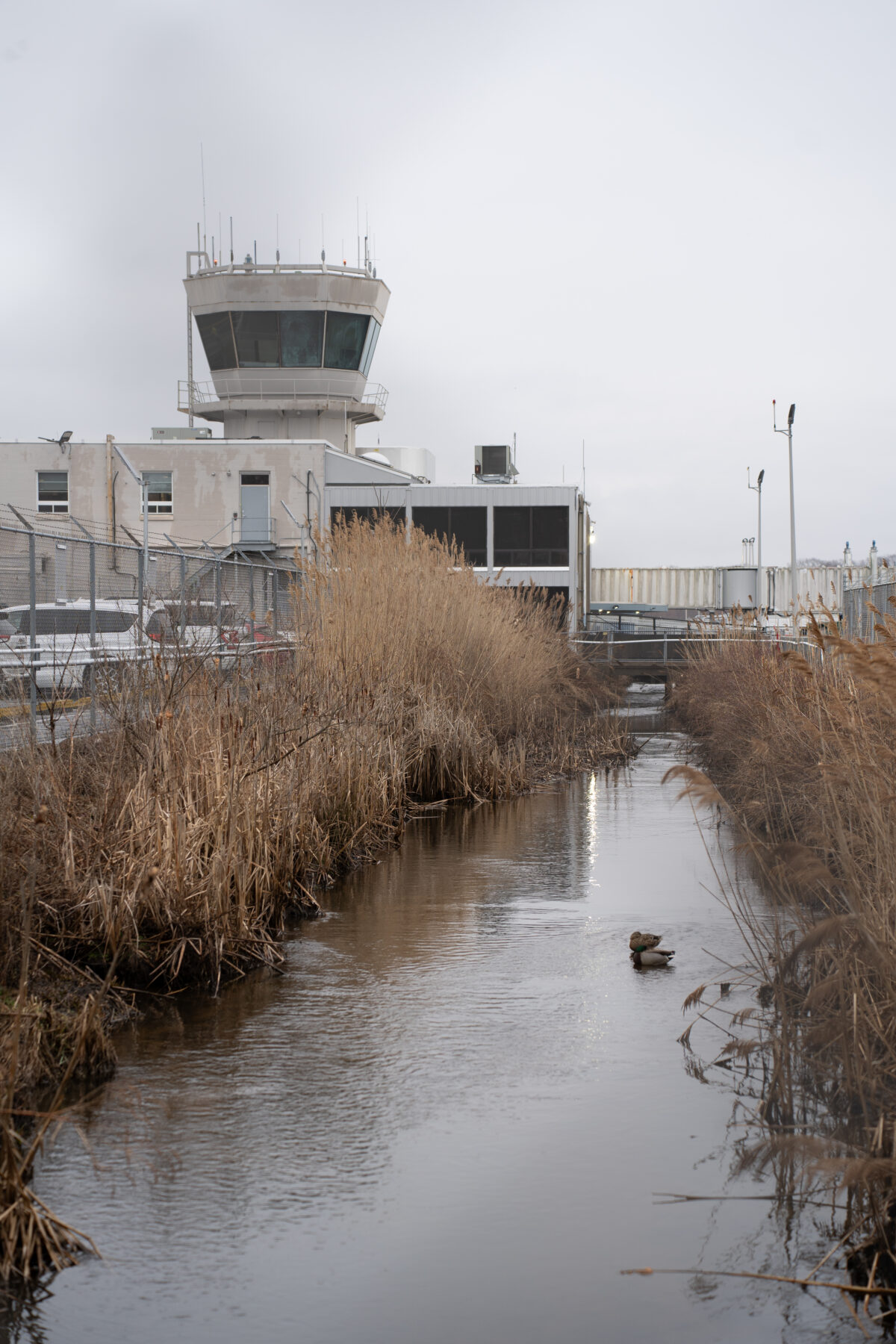
“When I heard the news of the FONSI I burst into tears and I doubled over on the floor,” Gallicchio said. “I was literally that shocked. The EA [Environmental Assessment] was a complete shocking act of greenwashing.”
Save the Sound, a New Haven-based nonprofit, is currently appealing the Environmental Assessment. It cites the numerous state and federal agencies—including the Environmental Protection Agency, the U.S. Department of Health and Human Services, and the Connecticut Department of Energy and Environmental Protection—that, like Gallicchio, have pointed out shortcomings in the document. For example, ultrafine particle pollution was not considered in the FAA’s Environmental Assessment, as these are not federally-regulated pollutants. Neither were the impacts of leaded fuel used by small, private aircrafts. Wetland impacts are also largely left out of the document, which states that there are “no critical habitats within the project site,” a fact that local residents and Save the Sound refute.
According to the National Oceanic and Atmospheric Administration, the aviation industry accounts for 3.5 percent of warming worldwide. If the industry were a country, it would be the sixth-largest emitter in the world as of 2019. Opponents of Tweed see this as a key reason to limit the growth of the airport. “This is an expansion of an impossibly wet, small, foggy airport during an era of climate crisis when every responsible policy maker I know talks about ways we need to reduce our carbon usage and our carbon footprint,” Gallicchio said. She said that when she brought up these concerns to Elicker in a July 2022 meeting with him and Economic Development Administrator Michael Piscitelli, she was quickly dismissed.
“[Piscitelli] said that global warming is a global problem and this is a local issue,” Gallicchio said. Piscitelli did not recall this conversation, and referenced the potential local environmental benefits from moving the terminal—including higher stormwater storage capacity at the airport. Elicker also contested that this is his administration’s position. “[Planes] have jet fuel that is detrimental for the climate,” Elicker said. “But that doesn’t mean we should never fly anywhere. We can’t look at the airport in isolation and there is so much we are doing as a city to reduce our climate impacts.”
The current expansion put forth by Avports includes plans for a six-story parking garage, a 638-foot runway expansion, a 462,500 square-foot airplane parking building, and the new terminal which will come in at around 80,000 square feet. Residents and environmental activists alike fear the potential harm this construction will have on surrounding wetlands, and also the prevalence of flooding. Low-lying and coastal East Haven is already a flood-prone city, with almost a third of homes at severe risk of flooding within the next thirty years. The new terminal will be built on stilts to protect against future water damage. This is still a rare design for airport terminals, but one that might become more popular as flood risks from climate change increase.
The Political Quagmire
Throughout the three-year expansion fight, opponents have complained that everyone seems to be paying attention to other things, anything but Tweed, including those who are tasked to legislate on it. At an April 2023 meeting of the South Central Regional Council of Governments, East Haven Mayor Joseph Carfora accused his colleagues of negligence as they voted to pass a resolution in support of the Tweed expansion and the draft Environmental Assessment.
“First of all, I want to ask everyone on this board,” Carfora said to the assembled council. “Has anybody read this EA?” It was a hybrid meeting—Elicker was Zooming in from his New Haven office. Carfora held up a copy of the 216-page draft environmental assessment document, spiral bound with a plastic cover. “Has anybody took the time out to read this?”
Hoey and Elicker responded that they had read most of it, but only two other people in the adjoined crowd raised their hand, both onlookers, not members of the council. “I want to ask all of you,” Carfora then said. “How can you vote if you don’t know what’s in this?” The rest of the members looked on, a few holding on to their hands, as Carfora continued to speak, growing irate. Carfora cursed, and only then did Elicker chime in.“Point of order,” he said. “If we could all use appropriate language.”
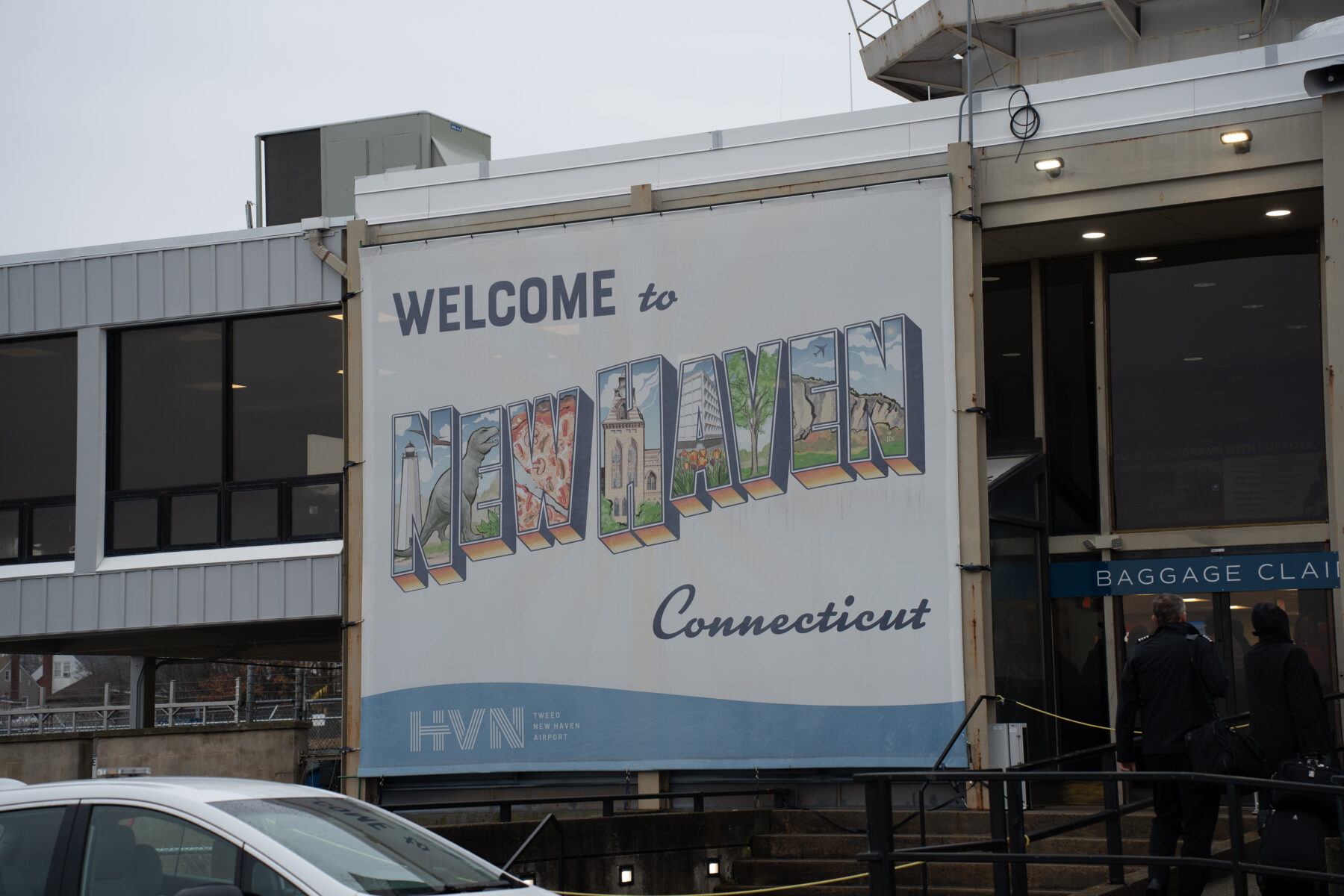
Carfora’s motion to table the resolution failed with a 5-4 vote. He stood up and, along with two staff members, left the meeting. The council then voted on the original resolution in support of the Tweed expansion and draft environmental assessment. It passed unanimously, though two members abstained: North Haven First Selectman Michael Freda and Woodbridge Deputy First Selectwoman Sheila McCreven.
Although half the airport sits within East Haven’s borders, ownership belongs solely to New Haven. Legal jurisdiction and regulation largely fall on the federal government, as is the case with airports around the country. “This is lopsided,” Carfora said before he left the April 2023 meeting. “Every time I look back at this I’m getting more information. Everything is twisting and turning and it’s all against East Haven.” One aspect that East Haven does have a small amount of control over is the Tweed Airport Authority Board of Directors, a group of fifteen unpaid volunteers appointed to govern the airport.
Of the Board’s fifteen members, eight are appointed by The New Haven Mayor’s Office with confirmation from the Board of Alders, five are appointed by Carfora of East Haven, and two are appointed by the South Central Regional Council of Governments (SCRCOG). The Board governs Tweed and appoints the Executive Director, although since the forty-three-year Avports lease was approved, their day-to-day responsibilities have shrunk. The Authority and the Board do accept noise complaints from residents, who also can send them directly to the Connecticut Department of Energy and Environmental Protection through a complaint line. Board meetings are also open to the public, and the board reserves time for comments and questions from individuals, but they rarely respond directly to public comments. More often than not, individuals are referred to the FAQ page on the website.
Don’t Hate the Player
When Carfora walked out of the SCRCOG meeting on April 26, 2023, he couldn’t stop the council from passing a resolution in support of the Tweed expansion and draft environmental assessment. Ironically, Avports, which leases Tweed from the Airport Authority, which leases land from the City of New Haven, did not need the SCRCOG’s vote of support to proceed with its expansion plans.
As a certified airspace, Tweed is under the specific jurisdiction of the federal government, specifically the FAA, which regulates the American aviation industry. The administration’s primary duty is to guarantee the safety of planes and passengers in the air. To ensure this, it manages air traffic control, regulates planes and airlines, and issues licenses to pilots. The organization’s main goal, as stated on its website, is “providing the safest, most efficient aerospace industry in the world.”
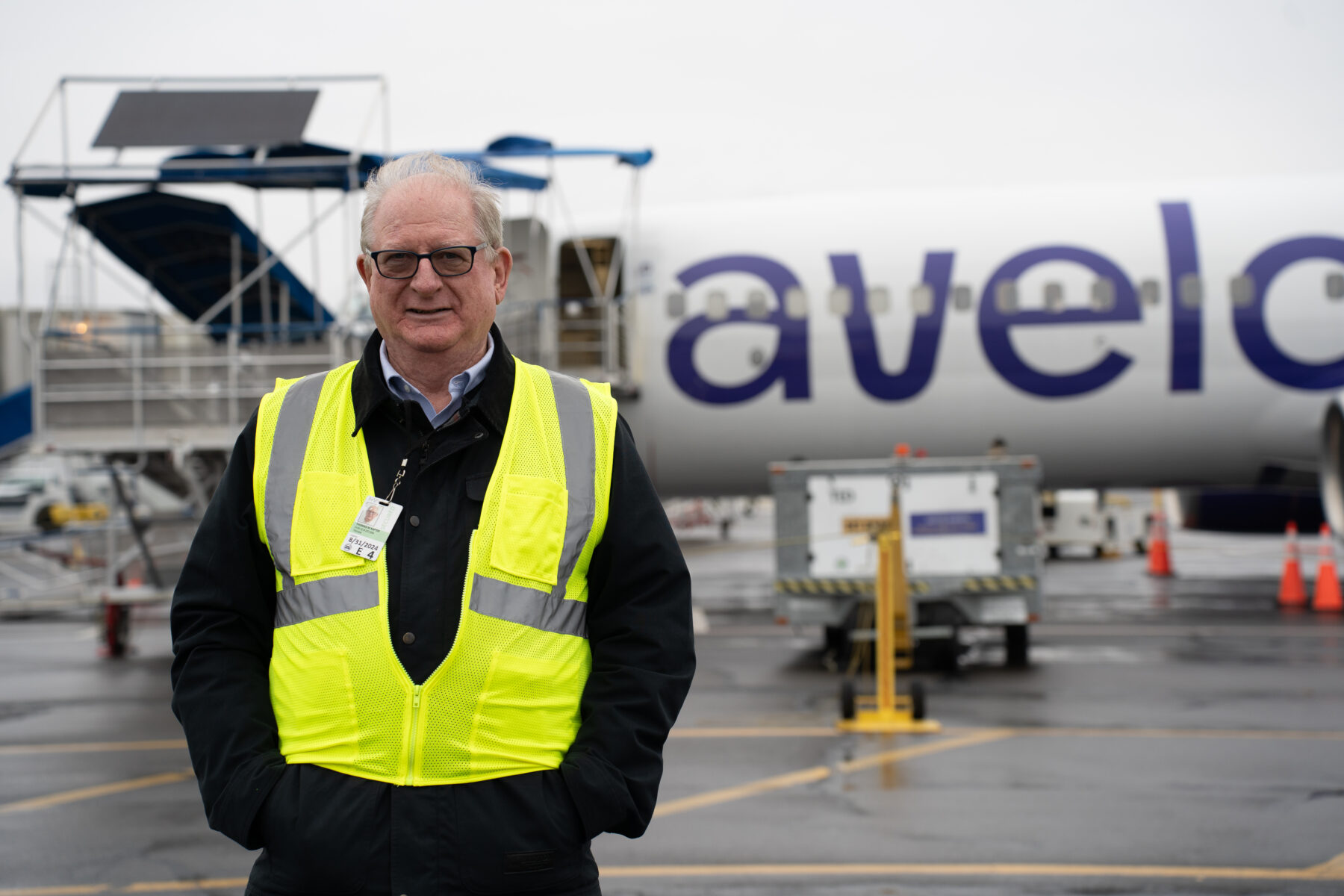
To this end, the FAA has conducted its job admirably in New Haven. Air traffic has expanded, becoming more accessible and efficient, and there have been no major safety incidents since Avelo arrived at Tweed. But although the agency has Environmental Programs that ensure airports are up to the standard, environmental protection and regulation is not the FAA’s top priority, nor is it a part of their stated mission. Yet, the FAA is still the only body—municipal, state, or federal—with the ability to definitively find that there will be no significant impact from the expansion on the land, waters, and people surrounding Tweed.
On September 26, 2023, another federal department got involved in the dispute. Admiral Rachel Levine, the Assistant Secretary for Health in the U.S. Department of Health and Human Services issued a letter to four FAA officials urging them to conduct an Environmental Impact Statement for Tweed’s expansion. In addition to restarting and expanding study into environmental and health impacts, the EIS would also necessitate considerably more community input and feedback. In the letter, she references the environmental and health hazards many neighborhoods around Tweed already face, notably their high asthma rates. The letter was issued in September. Three months later, the FAA issued the Environmental Assessment and Finding of No Significant Impact, with no plans to move forward with an Environmental Impact Statement.
Adam Sarvana, the Communications Director for Levine, declined to comment on this story. “At this point we’re going to let the letter speak for itself,” he said. All Levine could do was “strongly recommend the FAA conduct further analysis,” as she wrote in her letter. The power ultimately landed within the internal operations of the FAA.
East Haven and local nonprofit Save the Sound are making one final effort to halt the expansion by appealing the decision to the federal level. If they win, the decision could force an Environmental Impact Study and a much deeper look into the potential impacts than the current EA does. Still, the changes that have already happened—the onset of Avelo, the ten flights landing at Tweed every day, and the increase in traffic and pollution around the airport—do not require any additional permission or approval. They are here to stay.
From Rafter’s perspective, these impacts are not the only ones to consider. He sees Tweed as having an obligation not only to East Haven, but also to communities much farther away—all along the southern U.S. coast where Avelo flies to. That network of the aviation economy, connected by runways, planes, and corporations that easily cross state lines, relies in part on Tweed. On a heavy traffic day, it may take twenty or twenty-five minutes to reach downtown New Haven from Tweed Airport. In that same amount of time, 150 people could be halfway to Baltimore, one of the eighteen Avelo destinations. These transportation routes, as they become more habituated, create a connection between two places, economies, and communities that is no longer dependent upon physical proximity. In Rafter’s air traffic controller office, it’s easy to feel close to the wide sky and the planes crisscrossing it high above. The ground below is far away.
Gallicchio may be getting ready to leave. The neighborhood she loved, where she raised her three kids and has lived for twenty-five years, has now changed to the point of unrecognition. “I am one of the people with the wherewithal to leave,” she said. “The people who are going to have to stay here and watch their homes and their neighborhood and their physical health deteriorate, it’s depressing.”Gilman-Ford doesn’t have plans to leave yet, although she has taken a step back from the airport fight. “It’s just consumed me,” she said. “It’s consumed my kids. I took the flight tracker off my phone,” she said. “I must have filed three hundred complaints, I never got one response, not one.” She used to take her kids walking along the Tweed border on Thompson Avenue; she’d point out groundhogs and ducks to them along the path. The trees were cleared in 2020 as part of a drainage plan, and the animals never came back. Now that they are gone, Gilman-Ford is letting her own garden grow, at her house one block away. The garden is overgrown but she doesn’t want to cut down the rhododendron bush—rabbits recently moved in. “I’m going to be the idiot that leaves all the crappy brush on my front yard,” she said. “I don’t want to kill the animals.” Above her, in the sky, the air boomed as another Avelo 737 came in for landing.
— Meg Buzbee is a senior in Pierson College and a Podcast Editor for The New Journal.
Photography by Ellie Park.

